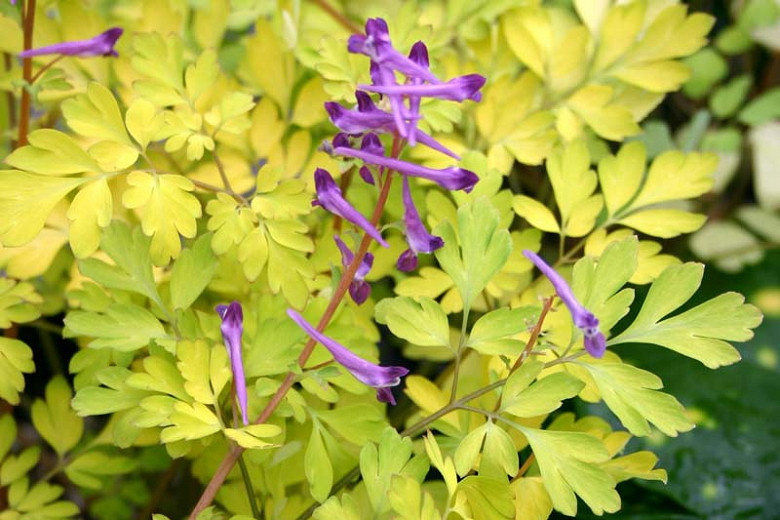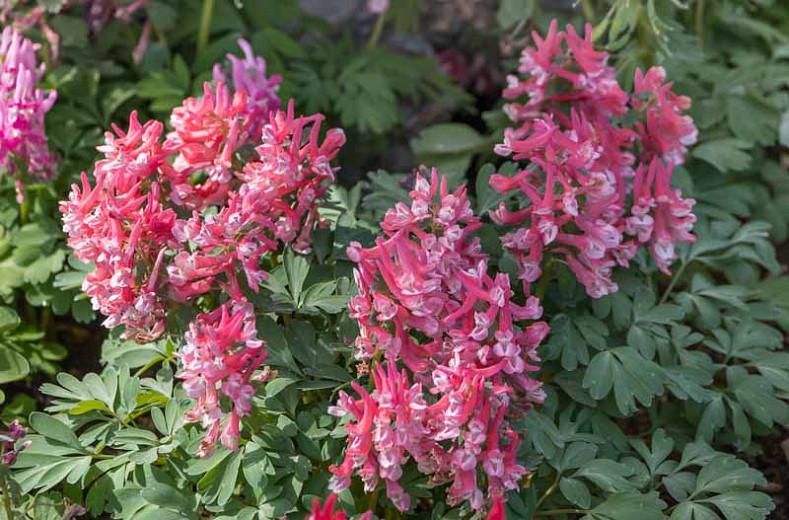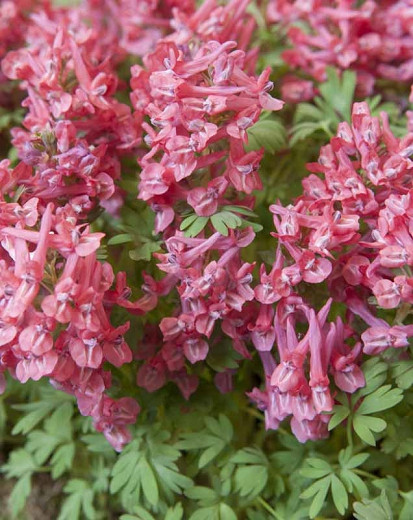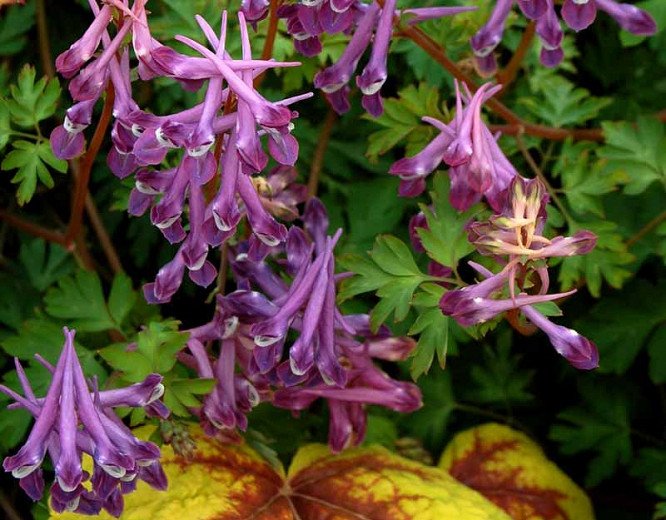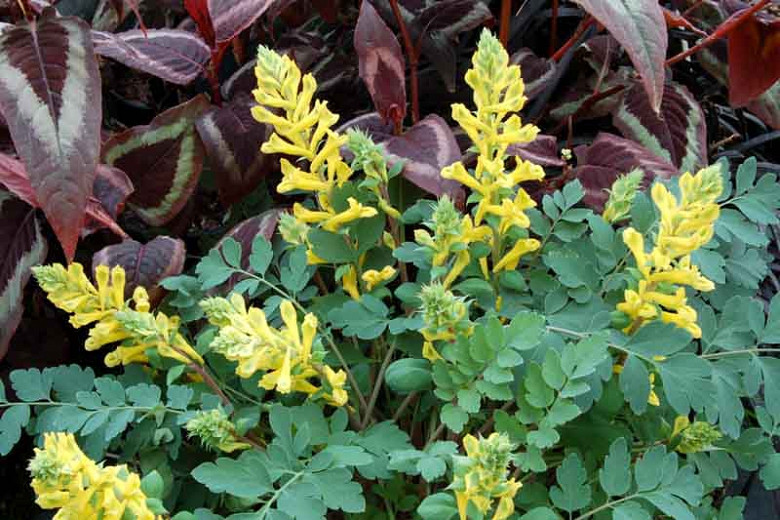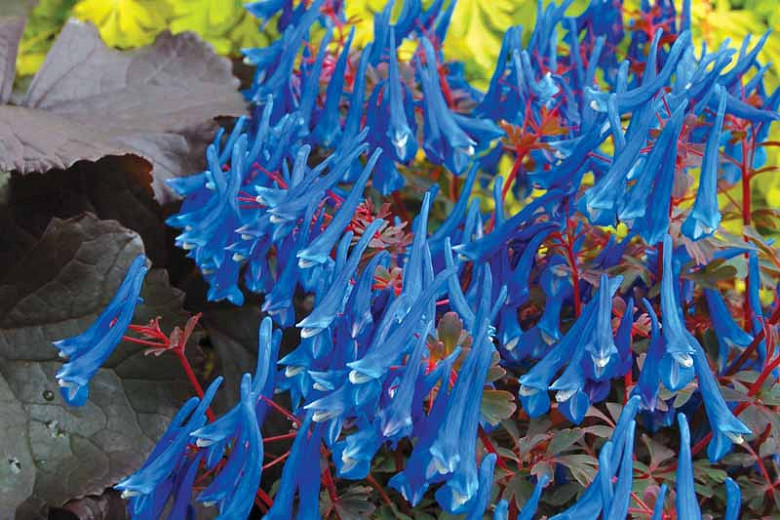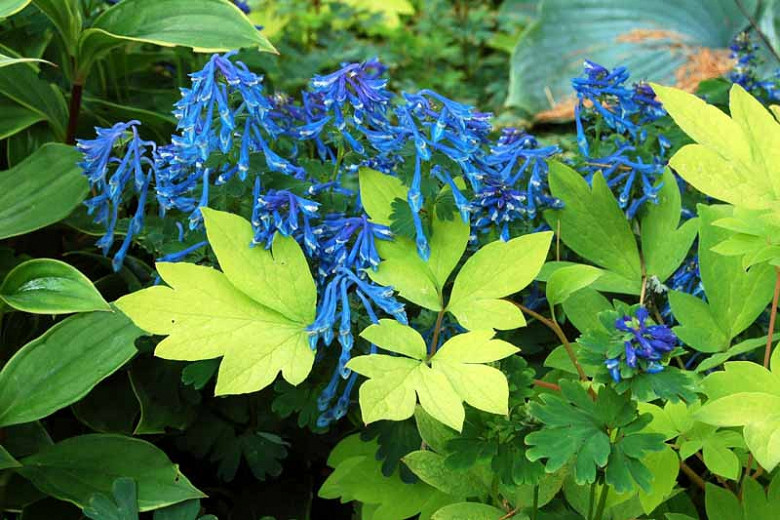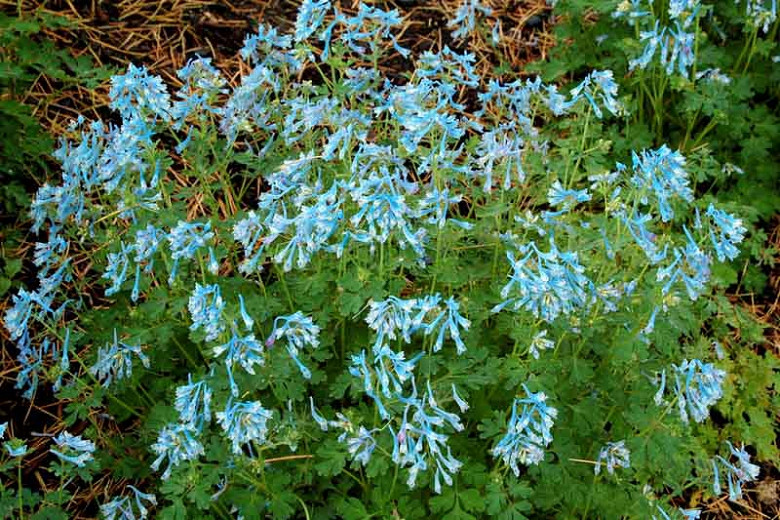Corydalis sempervirens (Rock Harlequin)
Corydalis sempervirens (Rock Harlequin) is a charming biennial noted for its beautiful lacy foliage and delicate flowers. It forms a basal rosette of soft blue-green, dissected foliage during its first summer. Resembling the leaves of fern fronds, the foliage is handsome, even when the plant is not in bloom. In the second year, the plant sends up a profusion of branched stems, each topped with clusters of dangling, pale pink, tubular flowers with yellow tips, 1 in. long (2.5 cm). Blooming sporadically from late spring to fall, the blossoms produce nectar and are visited by numerous insects including bumblebees and skipper butterflies. The flowers give way to long, narrow seed pods. Easy to grow, Rock Harlequin thrives in climates with cold winters and cool summers. It is often found on dry soils of recently disturbed sites. This whimsical wildflower has potential for use in rehabilitation of disturbed sites and provides erosion protection.
- Grows in clumps, 1-4 ft. tall (30-120 cm) and 1-2 ft. wide (30-60 cm). Naturalizes by reseeding and can get weedy.
- Best in full sun or part shade, in dry, acidic, well-drained soils. Tolerates poor, dry, gravelly soil.
- Virtually disease and pest free.
- A great perennial plant for shade gardens, cottage gardens, rock gardens or woodlands
- Easily propagated from seed sown as soon as ripe or division.
- Native to North America from Newfoundland to Alaska, south to British Columbia, east to Montana, Minnesota, Tennessee, Georgia.
Requirements
| Hardiness | 2 – 6 |
|---|---|
| Plant Type | Perennials |
| Plant Family | Corydalis – Fumeworts |
| Exposure | Full Sun, Partial Sun |
| Season of Interest | Spring (Late)Summer (Early,Mid,Late)Fall |
| Height | 1' – 4' (30cm – 120cm) |
| Spread | 1' – 2' (30cm – 60cm) |
| Spacing | 18″ – 24″ (45cm – 60cm) |
| Water Needs | Low, Average |
| Maintenance | Low |
| Soil Type | Chalk, Clay, Loam, Sand |
| Soil pH | Acid, Neutral |
| Soil Drainage | Well-Drained |
| Characteristics | Showy |
| Native Plants | United States, Alaska, Midwest, Illinois, Indiana, Iowa, Michigan, Minnesota, Ohio, Wisconsin, Northeast, Connecticut, Maine, Massachusetts, Maryland, New Hampshire, New Jersey, New York, Pennsylvania, Rhode Island, Vermont, Rocky Mountains, Montana, Southeast, Georgia, Kentucky, North Carolina, South Carolina, Tennessee, Virginia, West Virginia |
| Tolerance | Rabbit |
| Attracts | Bees, Butterflies |
| Garden Styles | Gravel and Rock Garden, Informal and Cottage, Prairie and Meadow |


